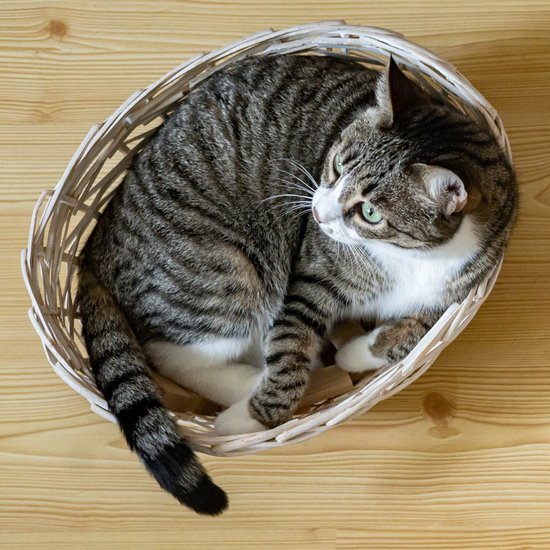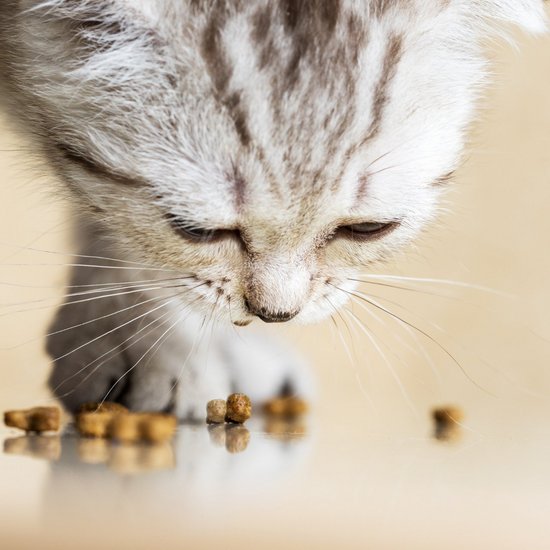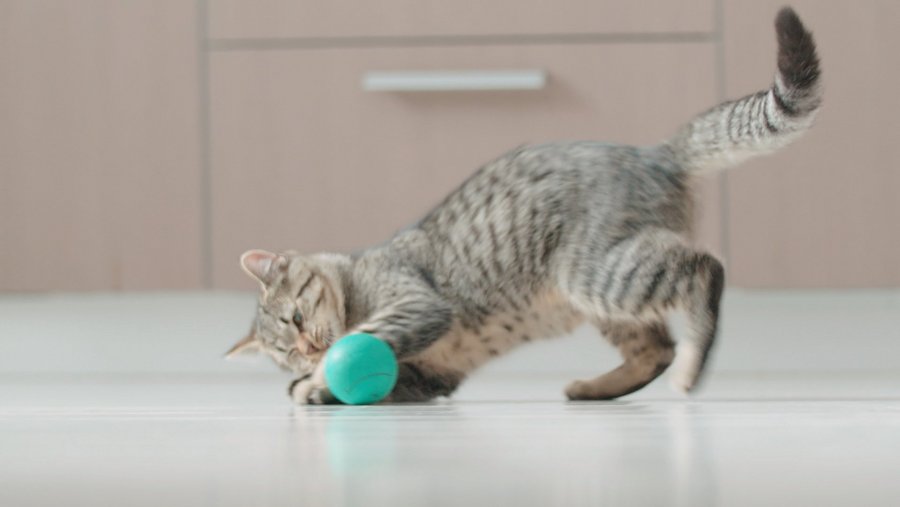Whether it’s their size, their shape or just the general indicators of a healthy cat, owners want to know that their furbaby is in tip-top shape. Unfortunately, our cats can’t tell us when they’re feeling bloated or under the weather, and they’ve evolved to hide their symptoms for fear of showing weakness to predators. Always be aware of any behavioral changes.
So in this post, we’re going to run through the tell-tale tips and hints that can show us whether our kitty is healthy or otherwise. While it’s easy to obsess about a healthy cat weight and see this as the be-all-and-end-all of feline fitness, we’ll give you some other techniques that don’t require the weighing scales.
As an added bonus, we’ll suggest some healthy cat food (and cat treat) options that will help keep your little tiger lean and mean, while giving them all the nutrients they need to burn calories.
A Healthy Cat Weight (and How to Judge It)

We’ll cover this topic in more detail in a future post, but for now, we can summarize by saying that a healthy adult cat should weigh around 10 pounds (4.5kg). However, this will vary according to the breed you have; a bigger breed, such as a Maine Coon, will weigh more than a Siamese, and sometimes several times more. Age and gender will also play a role—male cats tend to weigh more than females.
So the veterinary community has developed a system known as the Body Condition Score (BCS), which is designed to offer a more accurate assessment of your cat’s weight. To find your cat’s BCS, you need to examine them in three specific ways:
- Looking at them from above to see whether you can detect the outline of their waist.
- Looking at them from the side to see the shape of their belly.
- Feeling for their ribs, lumbar vertebrae (spine), and pelvic bones.
The BCS scale runs from 1 to 9, and a score of 5 is ideal. This means you can see the outline of the waist, but it is not exaggerated; their abdomen is fairly flat and straight, neither drooping nor tucking into the body; and you can feel their bones but not too easily.
Other Signs of a Healthy Cat

In addition to your cat’s weight and body shape, it’s important to monitor them regularly and look for clues in their appearance and demeanor. Regular check-ups at the vet are essential, but you can do much of the detective work yourself once you know what to look for.
Here are seven signs that all owners should keep an eye on:
1. Coat
A clean, shiny coat is the classic sign to look out for. As well as demonstrating that your cat is on top of their grooming regime, a good coat shows they’re getting a balanced diet with plenty of vitamins, minerals, and essential amino and fatty acids.
2. Eyes
The eyes should be bright and clear, the pupils should be of equal size, and there should be no redness or discharge. If the eyes aren’t clear, that may be a sign of a condition such as conjunctivitis (swelling of the conjunctive tissues).
3. Ears
The ears should be clean, light-pink in color, and free of redness, swelling, debris, or wax.
4. Gums
Healthy cat gums should be pink or pale. If the gums are red rather than pink, that may be a sign of an inflammatory condition like gingivitis, commonly caused by plaque and tartar buildup.
5. Sleeping
Cats sleep for up to 16 hours a day. However, if you think they’re sleeping more than normal, it’s worth getting them checked out with a vet.
6. Play
Even the laziest cats can get excited by a fluffy wand, a laser light, or a toy mouse.
The Best Cat Food for a Healthy Kitty

Your cat is an obligate carnivore, which means they need to eat meat. Specifically, their diet should be high in protein with lesser amounts of fat and carbohydrates: this replicates the blend of nutrients they would get from birds and rodents in the wild. Foods like chicken, turkey, and salmon can provide the lean, high-quality base your kitty needs.
It’s also important to think about vitamins and minerals, as these play a vital role in keeping your cat healthy and active.
Vitamin A: Keeps their skin, coat, muscles, and nerves working properly. Vitamin B12: Supports the nervous system, immune system, and digestive tract. Vitamin D: Helps bone growth and supports muscles and nerves. Calcium: Facilitates healthy bone development. Iron: Helps oxygen move around the body. Magnesium: Assists the development of teeth and bones.
Healthy Cat Treats

Healthy cat food should be complemented with healthy cat treats that are packed with nutritional goodness. Snacks based on high-quality meats with the nutritional blend described above are ideal.
Meaty Morsels Chicken Recipe with Salmon is a great example: it’s packed with protein and contains loads of Omega-3, which supports a shiny coat and healthy skin.

